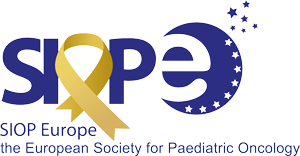Today, an outstandingarticle on childhood cancer 5-year survival over 1999-2007 (as compared to previous data) has been published on the Lancet Oncology. This scientific paper presents the latest results from EUROCARE 5, a cancer registry-based project on survival and care of cancer patients in Europe, that monitored and compared survival and healthcare data from cancer patients and survivors diagnosed up to 2007, analysing long and short term survival rates, diagnostic and therapeutic procedures for cancer patients.
The same topic will be discussed today during a high-level round table on the“Key Determinants of Inequalities in Cancer Survival across Europe”, hosted by the Member of the European Parliament (MEP) Alojz Peterle and organised by MEPs Against Cancer (MAC).
The main message emerging from Ms. Gemma Gatta’slatest article - “Childhood cancer survival in Europe 1999 - 2007: results of EUROCARE-5 - a population-based study” - is that survival and cure rates for childhood cancers have greatly improved, though not in all European countries.
Looking at the Europe-wide picture across the different disease areas, the study points out that, while there has been an improvement in survival for some categories of tumours, over the last 10 years there has been no improvement in survival of children with tumours that have the worst prognosis (brain tumours, neuroblastoma and sarcomas), along with acute myeloid leukaemia. This finding means that no progress was achieved where there was a real need, and this is a worrying data. This is whySIOPE, together with the EU-funded project ENCCA, has set up a strategic plan and road-map for the next 15 years of paediatric oncology in Europe, aiming to increase cure rate and quality of cure in young people with cancer in all European countries. In particular, SIOPE is currently doing its best in order to develop more innovative treatments and medicines for children with cancer, as well as precision medicine.
The other key finding of the study is that there are still unacceptable disparities in survival of children and adolescents with cancer across Europe:
- Survival is generally lowest in Eastern Europe: the survival rate there is 10 to 20% lower than in Western Europe;
- Disparities became larger for cancers with poor outcomes (AML, ependymoma, osteosarcomas, Ewing sarcoma and rhabdomyosarcomas).
For SIOPE, as to address the existing inequalities of access to standard treatments, care and clinical research for childhood cancer patients and survivors across Europe is a priority. Our Society addressed childhood cancers’ healthcare inequalities in Europe through many initiatives, for instance theEPAAC project and the Standards of Care for Children with Cancer, a widely recognised reference document to evaluate progress in drug development, treatment and care in treatment centres all over the continent, which has also been acknowledged by the Lancet Oncology paper itself.
Finally, another priority for our Society is to address the long-term toxicity and cancer treatment consequences in survivors, an issue closely link to the central theme of today’s event. SIOPE has focused its research and advocacy efforts to monitor and prevent late effects in childhood cancer patients and survivors through the projectPanCareSurFup and the ENCCA WP13 on the quality of survivorship, which includes the innovative Survivorship Passport initiative.
More information
Article on The Lancet Oncology: “Childhood cancer survival in Europe 1999 - 2007: results of EUROCARE-5 - a population-based study”
SIOPE’s work on these topics:
- Our Society’s position papers
- The Lancet Oncology articles on ‘New policies to address the global burden of childhood cancers’ and ‘Sustaining innovation and improvement in the treatment of childhood cancer: lessons from high-income countries’
